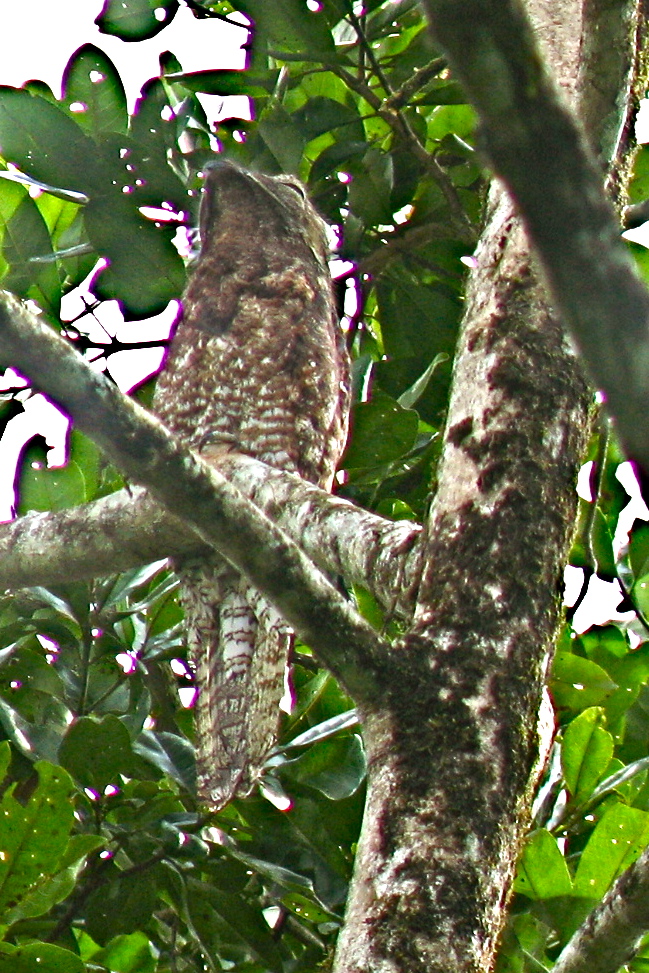The Great Potoo
That’s almost all there is to say, except: here’s a picture of one, trying its best to look like a tree trunk, and doing an expert job of it:
I’ve always longed to see a Potoo, and when we got to Finca La Selva OTS (known to most North American birders as La Selva Research Station) in Costa Rica, I was excited to hear that the La Selva researchers and guides (Joel was ours) had been seeing a Great potoo around recently. Sure enough, they re-found it, napping and waiting for night to fall so it could start its day.
>> Photo of Great potoo (Nyctibius grandis), at La Selva OTS (thanks to Charlie Gómez for digiscoping with my camera through his scope)
It was roosting high overhead against a light gap in the foliage, but we were able to get a pretty clear view of the bird through scopes, and we filled our eyes (and cameras) with the glorious obfuscation that is what Potoos are all about.
I admit that part of my fondness for this bird is on account of its name, Potoo, but even without the humorous handle, it would be an excellent organism: look at that huge coin-purselike gap of a mouth — it’s capable of opening all the way to behind the bird’s eye. It’s mostly gape — the soft-skinned corners of a bird’s mouth that hinge the upper and lower mandibles of the bill, and it’s unique among its nightjar relatives (whipoorwills, frogmouths, and allies) in having a toothlike projection on either side of the tiny beak. The Potoo’s large mouth is for catching flying insects in mid-flight, at night. Potoos typically sally forth off their perches in the dark, nimbly for their odd shape, to catch and swallow insects, returning to a perch to await the next fly-by snack. This bird’s eyes are closed for sleep/camouflage (a branch with eyes is a dead giveaway), but even still you can see they’re big, like an owl’s. So big there’s not much room for a brain, which is purportedly the same size as a hummingbird’s, a much smaller bird.
There are seven species of potoo, all native to Central and South America. Everything about the genus is distinctive — click here to hear a recording of its “song”, a loud, rough, croak-like call (I recommend the second one in the top row of samples). On the same page are excellent photos, which give a good idea of this bird’s strategy of sleeking its feathers, sticking its beak up and holding stock still in order to look as much like a broken branch as possible.

[…] statuesque potoo, a bird so fascinating it can’t be distinguished from a broken branch. I posted yesterday on the Great potoo (Nyctibius grandis), but can’t resist adding more today, including another […]